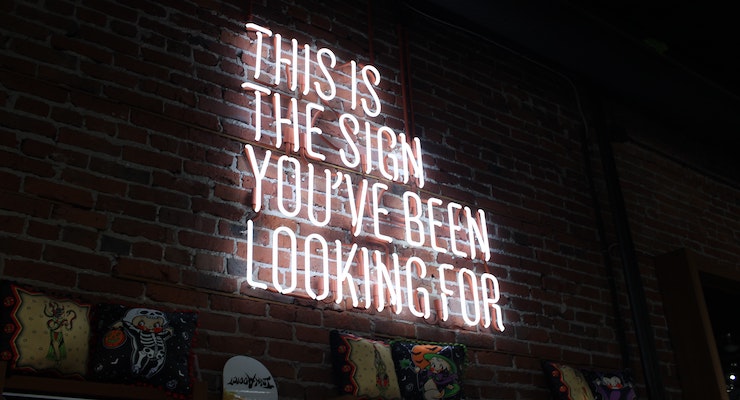When most people think about branding, they think about the largest companies in the world. Small business branding is often overlooked, especially by first-time entrepreneurs launching their first business. Branding for small businesses is just as important as it is for globe-spanning corporations and is the key to ensuring business growth. Whatever the sector or the growth plans of a small business, getting the branding right is one of the best ways to make it more likely that the business will be a success. While large companies may have vast resources to make branding easier to get right, even small business owners might find that building a strong brand is a lot easier than they thought.
Target Audiences
The first step to building a brand is to make sure that you know exactly who your target audience is. For small, local businesses, that could mean that your target audience is geography-based. For ecommerce sellers who sell all around the world, age, gender, and hobbies are more important to identify. If you want to develop the right brand identity and the most effective brand strategy, then you need to know as much as you can about who your business is going to appeal to. Just as you would not communicate with teens in the same way that you appeal to the over-70s, your branding needs to reflect your target audience as much as it symbolizes your small business.
Defining A Small Business Brand
This is the hardest part of building a brand, and often the most time-consuming. With your target audience in mind at all times, you need to start defining every element of your brand. Start with your product or service and identify exactly when and why someone would pay for it. Identify the main points that your product or service resolves around and start listing the main benefits that you offer that your competitors do not. Then think about your brand mission. Take time to identify what your small business stands for and what goals it wants to achieve. This is sometimes called a mission statement, but whatever you call it, it is the definition of your small business.
The Brand Name
Choosing the right name for your business is fun but challenging. Lazy entrepreneurs pick the first name that comes to mind, overlooking the importance of that brand name. The right name can be used in a variety of ways, from explaining exactly what you do, to appealing to your target audience more than your competitors.
When it comes to choosing a brand name, the best option is to brainstorm and write lists of your favorite ideas. Group those top ideas in categories and if you spot any recurring words or themes, make a note of them. A tech company is going to find very different themes and repeat words to a small business that sells organic vegetables! If you get stuck, do not be afraid to try a brand name generator. These can be a valuable tool for thinking outside of the box.
Top Tip: Do not permanently decide on a brand name until you have checked that it is not already in use and that the domain name for that brand name is available. This will save you a lot of trouble in the long-term.
Brand Imagery
When most people think of branding, they think about logos. Of course, branding is a lot more than just coming up with a cool logo. While logo design is important, you also need to determine your brand colors, slogans, and even the types of font that you use on your website. The key is to ensure consistency across every customer-facing communication. From social media to your invoices, your branding needs consistency above all else.
This can become quite challenging. The more digital assets that you have, the easier it is for branding updates to get buried in email inboxes, or mistakes to happen through miscommunication. That is where digital asset management comes in. There are some simple ways to learn about what is digital asset management, and this article breaks down everything that you need to know. The goal is to make it as easy as possible for every member of your team to access brand guidelines and those digital assets so that you reduce the chance of making branding errors.
Take Your Time
You should always ensure that your branding is in place and firmly established before you launch your business. One of the most common mistakes entrepreneurs make is to rush opening their business and only then to start thinking about branding. It is easy to see why. Launching a new business, although stressful, is a lot of fun and very exciting.
However, you must resist temptation and make sure that everything is right before you make your first sale. Create a launch calendar and make sure that you know exactly what needs to be done and when. Have your website ready to go, your social media pages, and your press releases ready to send. While it is a good idea to start generating buzz for your business before you launch, you should only start the buzz when your branding and your goals are firmly established.
Use Your Branding Everywhere
Handing out corporate gifts? Make sure they are covered in your branding. Have customer-facing members of your team? Give them branded clothing that will not only boost brand awareness, but also make you look more professional. Your branding needs to be included in every message and on every invoice that you send out. If you are a restaurant, have your branding visible on the menu, on the wall, and on the bills you hand out. If you run an ecommerce store, have your packaging branded. The more visible your branding, the more effective it will be. That means it can continue to work for you long after a customer has left your store, restaurant, or website.
Branding is as important for a small business as it is for Coca-Cola and McDonald’s. If you want customers to think of you first when they need what you sell, then branding is the key. Take the time to get your branding right and it will be the high-value asset that can help drive business growth.

Sylvia Browder is CEO of Specialty Home Services LLC, a Home Improvement Company; a Small Business Consultant at Browder Consulting Group, a startup consultancy firm to help women with startup assistance, marketing, website and graphic design work and other support services. In addition, she has co-authored several published books; publisher of ‘Sylvia Browder’s Blog for Women Entrepreneurs’ a lifestyle blog; and publisher of ShopSpendBlack.com Business Directory & Blog platform created to help consumers find black owned businesses in a searchable format. In her spare time, she enjoys spending time with her husband of 30 years; 5 adult children and 5 grandchildren; church; friends and motorcycle riding.
















